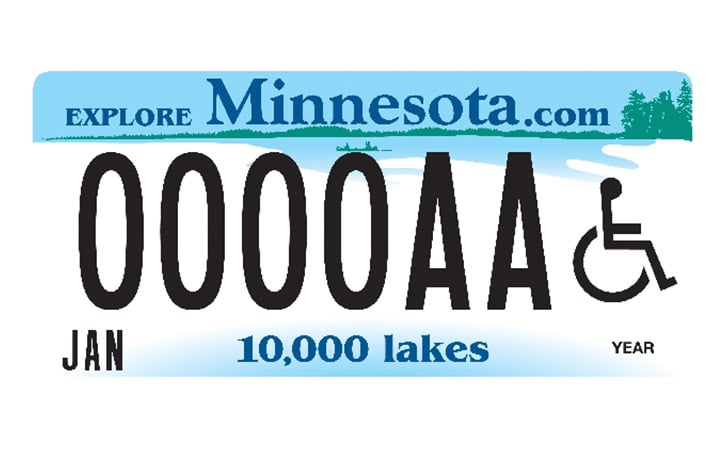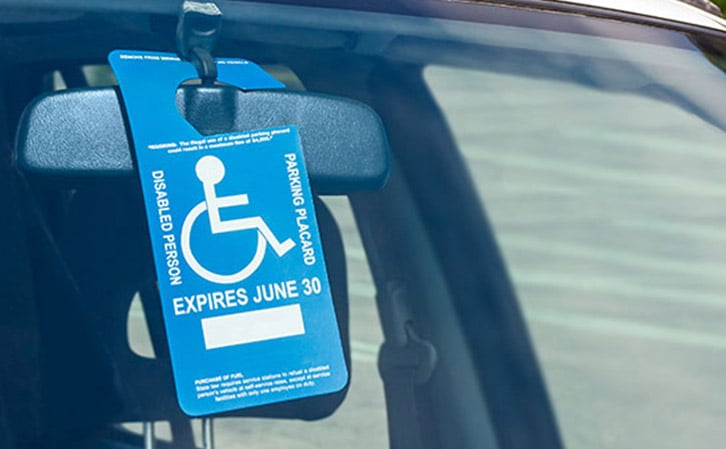Driving in a Wheelchair: Disability Plate or Placard is Best?
After a spinal cord injury, one of the most freeing things people say they experience is getting behind the wheel. With so much of the sensory experience of driving on the upper body, people with spinal cord injuries can still get a lot out of driving.
A decision that every driver with a spinal cord injury must make however is “should I or shouldn't I have a disability license plate?” This is not required if you have a disability and is not standard for drivers with disabilities. Typically, most people will opt for a disability parking placard since it is cheaper, but there are benefits to having a disability license plate.
There are those who believe that advertising you have a disability via a license plate puts you at a disadvantage. These drivers worry other drivers will see their plate and automatically have assumptions about their driving abilities. But there isn’t a right answer between a plate or a placard, just a preference. Here are the pros and cons of using a disability license plate or using a disability parking placard.
Disability License Plate

For many cautious drivers, they feel a disability license plate is the safer option. There are times when drivers with disabilities go slower because of a weaker wrist that day or a leg spasm, and when this happens it is important for nearby drivers to understand why. You do not want to cause unnecessary road rage when your disability affects the way you drive.
For those with quadriplegia, this might be the better option. People with quadriplegia sometimes take a little bit longer with their turns or need to be extra careful with their balance while driving, and all which makes their driving a bit slower. For drivers in a rush, seeing a disability license plate will spur them to just go around you.
Another reason disability license plates are preferred is safety. They are a lot harder to steal, even though license plates are sometimes stolen. Having a disability license plate can reassure that it will likely not go anywhere. It is also a good idea if you worry about losing a placard or do not want to have to put it on your dashboard every time you park.
A disability plate is also quite handy when you pull into an event parking lot, such as a festival or a concert. The parking attendants will automatically see your disability plate and point you in the direction of disability parking. For those who use parking placards, you'll need to hold your placard out your window as soon as they see you which can be difficult if you have difficulty moving your arms or hands.
Disability Parking Placard

It doesn't come as a surprise that most drivers with spinal cord injuries prefer disability placards in spite of them being the default option when you receive disability parking status. For most people, they prefer the anonymity on the road which the placard gives. Driving after a spinal cord injury can help many people feel equal again, like their old selves in many ways. Having a disability placard vs. a disability license plate helps in this vein.
There is simply a lot to be said for deciding when you want to tell others you have a disability when you are driving. Many people have presumptions about drivers with disabilities and would rather not worry about being judged. Others however it sees the license plate as an easier way to park without having to worry about the parking placard. For those who use a parking placard and have a hard time using their arms and hands, an easy solution is using duct tape to tape the placard to the dashboard.
Disability placards are also quite handy. If you are a multiple car owners, they can be helpful so you can move a placard from car to car depending on the vehicle you're driving. If you are an avid traveler and rent vehicles often, having a disability placard is a must as well so you can park in disability parking spots when you travel.
Driving after a spinal cord injury is truly life-changing and we hope many of you are able to get back behind the wheel as soon as possible. Whatever you choose, a disability placard, or a disability license plate, we hope you experience both the joy the open road brings and have a vehicle that is both safe and accessible.
Stay Updated on Advancements On Traumatic Brain &
Spinal Cord Injuries
About the Author





